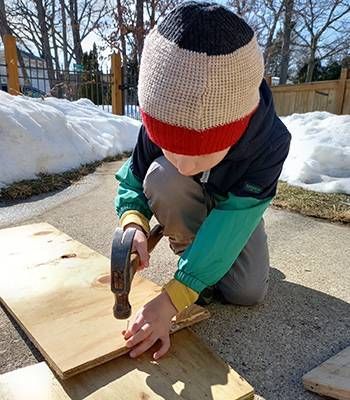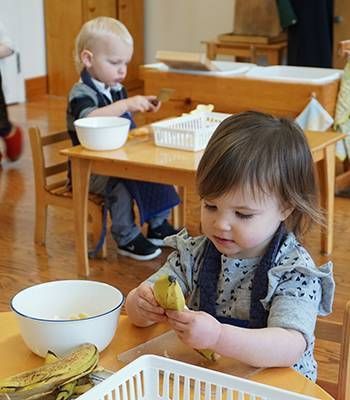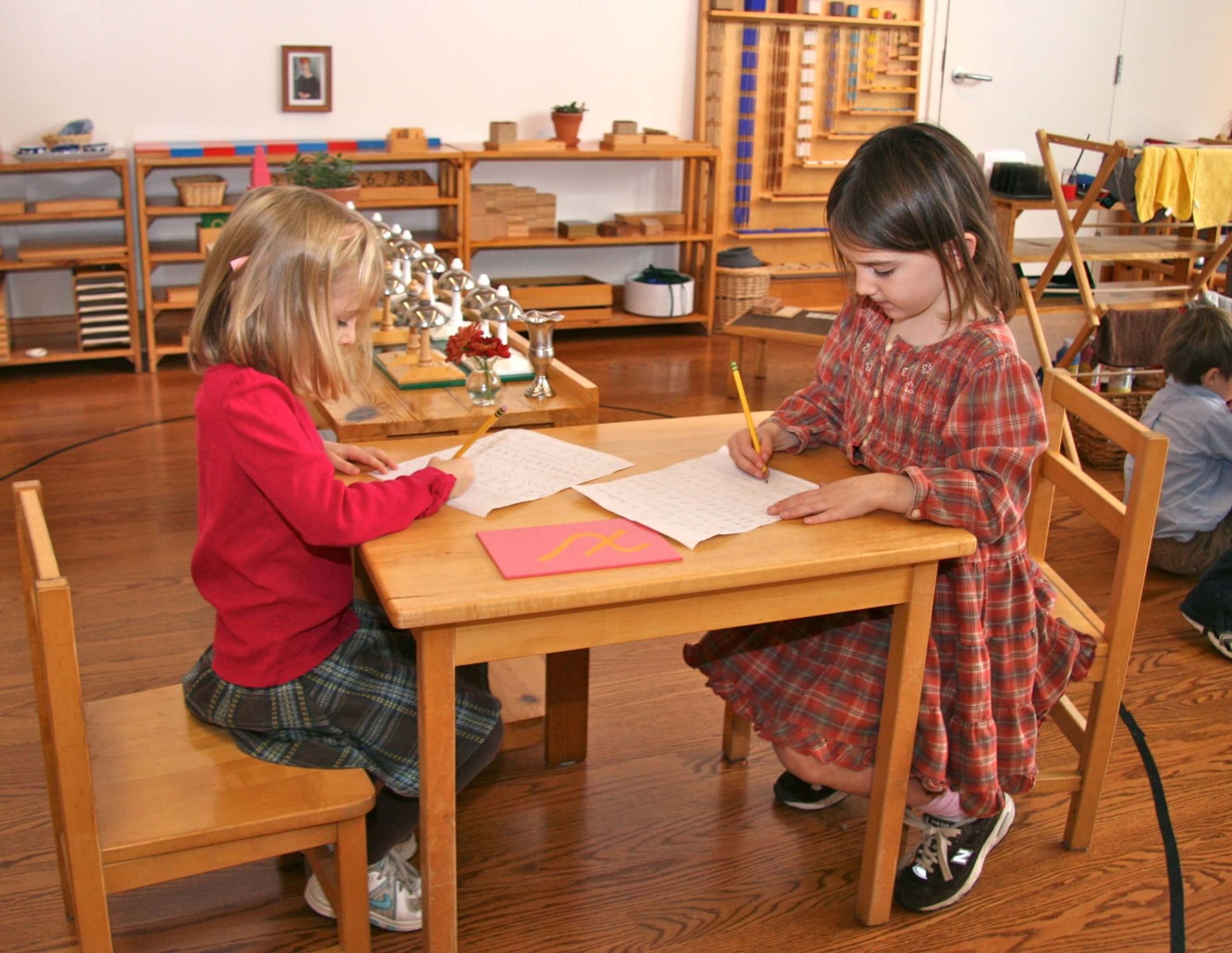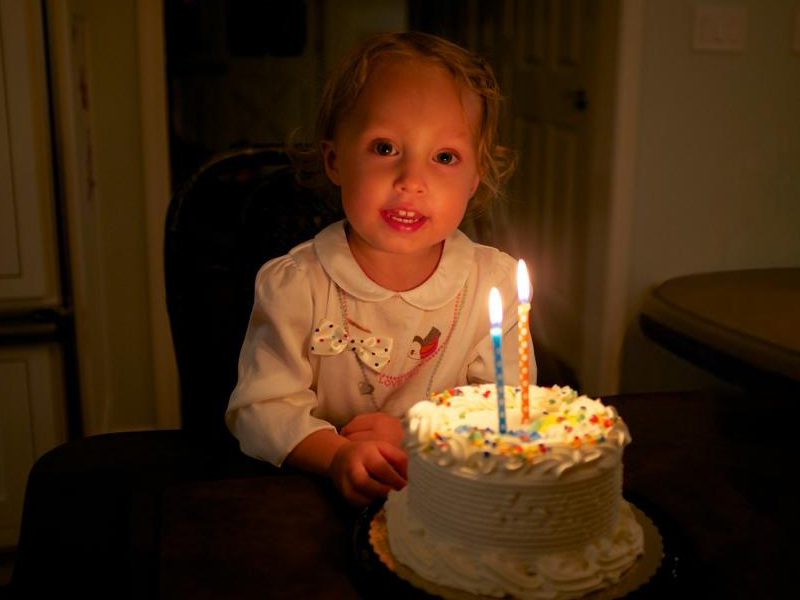
“Have faith in the child.” These are some of Dr. Maria Montessori’s most poster-worthy words, widely quoted in the Montessori realm. I must have heard this appeal at every Montessori conference and in all the Montessori training courses. It gets at the essence of Montessori education and parenting.
Certainly, the Montessori approach of education echoes this plea in every corner and in every way. Dr. Montessori saw that children have all the gifts of nature needed to create themselves as people. When supported and encouraged, children can develop to their full potential, and, often, they surpass our expectations. I have seen this as a Montessori educator again and again over the years, watching children on their journeys through struggles, difficulties, and eventual triumphs at Forest Bluff School. When they graduate from the Secondary Level program at age 14, every single young adult is remarkable. I don’t exaggerate when I say that this evolution, when supported by the Montessori approach both in school and at home, is stunning. Putting faith into each child’s abilities is what makes it happen.
The Messages in Montessori Classrooms
If you’re wondering how Montessori demonstrates faith in children’s abilities to form themselves, think about what distinguishes Montessori classrooms:
- Children are free to move around the room, choose their own work, and sit where they choose.
- Children are trusted to handle materials carefully when they have been shown how to.
- Children take care of their classroom and the materials in it: They dust the shelves, clean up the floors, wipe down the tables, water the plants, feed the animals, shake out the rugs, and touch everything in the room; it is their privilege and their responsibility.
- Children work with specialized materials that have a control of error built into each activity, so that children can learn to correct their own mistakes and create their own moral judgments of their performance.
- Children enjoy repeating the activities they are most interested in until they have mastered them and feel ready to move on to another challenge.
- Children are believed to have intrinsic motivation to do their best and to become their best selves; they do not need grades, stickers, or prizes to prod them.
- Children are given three uninterrupted hours every morning and several hours every afternoon to do their own work; all work is treated as equally important and valued.
- Children are not tested or quizzed on paper by arbitrary testing, but demonstrate their understanding as joyful expressions of their learning by writing reports, stories, making scripts or musical pieces, drawing, and by giving original oral presentations to their classmates and teachers.
- Children are given freedom to play unsupervised outside when they are six and older in small groups of peers, where they can work through their own social interactions and resolve most situations successfully on their own.
- Children are given the task of planning and executing trips out into society and into the wilderness, where they learn from their own mistakes, take on adult-like responsibilities and help one another to succeed as a group.

The result of such an education—where the children are not acted upon by the adults but, rather, do their important actions themselves—is independence and self-mastery. In Dr. Montessori’s words, “Thus he is both active and free, and from these two factors is created that vital quality of a strong character: internal discipline.”[1]
Such internal discipline arms our children to go out into the world beyond Forest Bluff with confidence. For example, this self-mastery can be seen in our graduates’ approach to their homework assignments in high school and college. They do not need their parents or teachers to prod them or remind them to do their work; these students know that the work is theirs to do, and they take pride in doing their best. Their sincere work ethic is integral to who they are.
The Messages from Parents
When we meet children’s needs and learning characteristics at each successive stage of their development on the continuum from birth to early adulthood, all things are possible. But what does it really mean, to have faith in your child?
The longer I have been a parent (19 years now), the more I realize that the most important thing we can do is show our children that we believe in their abilities with full confidence. Everything else starts to click and falls under this umbrella.
You can use words to tell your child:
“I have complete faith in you”
“I know you can do this.”
“I believe in you. I think you’re amazing!”
Whatever statement comes most naturally to you, say it often. But remember, it is imperative that you really believe what you are saying! And you CAN have confidence in your child—because when you stand back and watch them, really observe openly, you will see that every child works so hard, they care so much about how well they do, and they are eager to correct themselves and they know how to do it. The more we believe in them, the more we assume they are doing their best and that they’re in charge of themselves, the better and better things go. Everything starts to fall into place.
When we tell our children we believe in them, it may be appropriate to also say, “And let me know if I can do anything to help you,” or, “If I can be of help, please let me know. I am here for you.” Knowing when to ask for help and being comfortable doing so is, of course, an important ingredient to succeeding in life. But the main message—I believe you can do this—has got to be the unwavering theme. Your confidence must be sincere and overriding so that it is not derailed while you offer support.
Your actions as a parent can also show your child that you have faith in their abilities. You can give choices with boundaries that offer freedom and support so that your child can act and make decisions independently. This works best when you have a good idea of what is appropriate for each child at each age and stage of their development.
For instance, be careful not to expect your child to be more mature than his or her age, or to have powers that he or she developmentally cannot have yet. Often, parents might expect too much or too little, and sometimes both simultaneously. For example, I’ve seen parents expect an elementary-aged child to be able to monitor their use of screen technology, but then make their child’s sandwich for them. This is a prime example of a mismatch between a child’s developmental stage and a parent’s expectations. (An 18-month-old is capable of learning how to prepare foods, but a child is arguably not ready to monitor their relationship to technology until they are in high school)*.
By learning about Dr. Montessori’s observations of what children are capable of at each age and stage of their development, parents can match their expectations for their child’s success. This is what trained teachers do in the Montessori classrooms. Your child’s teacher is an excellent resource for how to find what choices and boundaries are most appropriate for your child’s stage of life. By reading about and discussing Montessori with educators and other parents so that you can try out the approach at home, you will quickly find the right balance for your family.
When parents set up home environments that support their children’s independence, it becomes even easier to have faith in their abilities. For example, giving a young child time and space to put on their own clothes, assisting them only as little as needed, placing objects down at the child’s level, and making things they need accessible to them offers children opportunities to develop their autonomy and confidence. As young children become more competent, parents find that they can trust them to care for themselves and contribute to the family more readily.
It's a Spiritual Journey
Maria Montessori really was a genius. And it wasn’t just her intellect that found ways to best support human development; it was her spiritual maturity that made her see how natural and superior human development is when unhindered by adults. She saw what happens when adults allow children to form themselves without unnecessary interference or prejudices about the outcomes.
It is not easy to have faith in our children because it means that we must believe that we’ve done a good job of giving them what they need for success. That means having faith in ourselves as parents, first! As the children watch their parents for clues about how to live a good life, parents are wise to have faith in themselves and each other, as well. Demonstrating that we have confidence in ourselves and others makes us good role models.
The Montessori approach takes us on a journey that is as spiritual as it is physical. Everything we do for our children is an act of giving of ourselves. Dr. Montessori was able to see how incredible children are when she gave them the freedom to act and think for themselves. She said, “The great benefit we can bestow on childhood is the exercise of restraint in ourselves.”[2] When the adults prepare the environment and provide boundaries and choices—but then let children be active to move and think for themselves—we give them a great gift.
When we can have faith in our children, we can truly follow them. They are the adults of the future, and they have the strength and the optimism to solve tomorrow’s problems as they encounter them in adulthood. They can only do this if we offer our confidence in them. Let’s put our faith into the future! Have faith in the child.
Footnotes
[1] Montessori, M. Montessori Speaks to Parents. 2017. p. 7
[2] Montessori, M. Montessori Speaks to Parents. 2017. p. 5
*At Forest Bluff School, we strongly encourage families to wait with screen technology such as computers, iPads, iPhones, and games until after eighth grade. Please see related blog articles to learn more.
Related Blog Articles
Freedom and Responsibility: How Choices and Limits Help Children Develop Character
Boundaries and Freedom: Creating Space for Children
Supporting Your Child’s Self-Mastery
Screen Time and Your Child’s Development
A Montessori Guide to Technology and Teens




